#thylacine sighting
Explore tagged Tumblr posts
Text


8/23/23
#did a little photo shoot before the show#thylacine sighting#tasmanian tiger#thylacine#nature#extinction#extinct animals#cryptid#fine art#sculpture#ceramics#ceramic sculpture#paleoart#scientific illustration#original art#marsupial#ten of swords#tarot#x of swords#ruin
81 notes
·
View notes
Text
@mechanicalhoundz
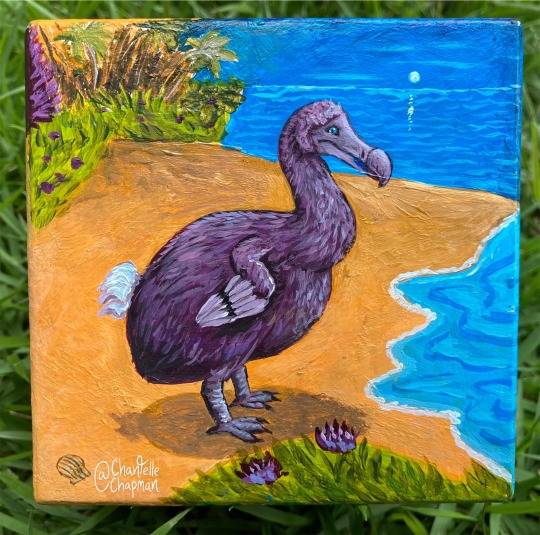
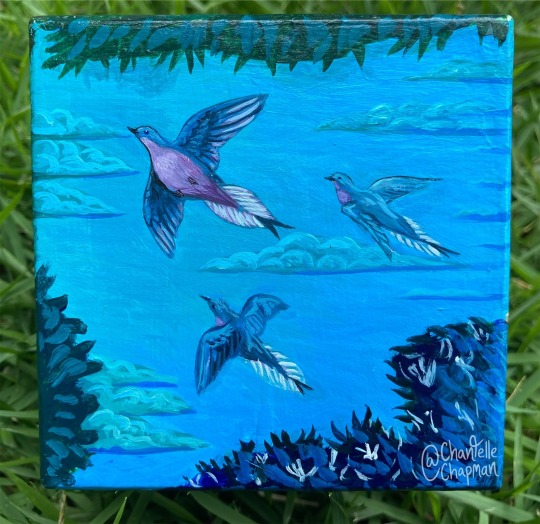


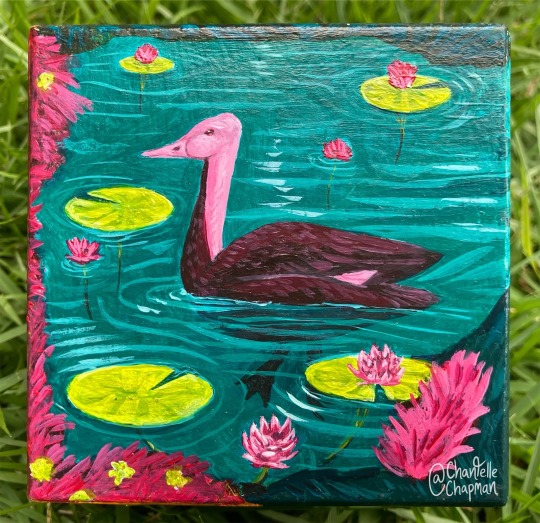
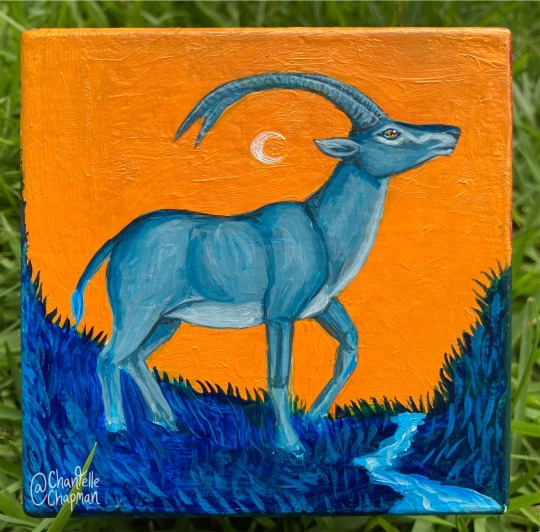
Something a bit less heavy for today, haha. This is a color theory exercise that I did a while back. Each of the six sides of the cube depicts an extinct species, using a different formal color scheme. It was a fun challenge to figure out ways to make the scenes ‘interlock’ along the edges! Featured are:
Dodo (tetradic)
Passenger pigeon (temperature)
Quagga (triadic)
Thylacine (analogous)
Pink-headed duck (split-complimentary)
Bluebuck (complimentary)
898 notes
·
View notes
Photo
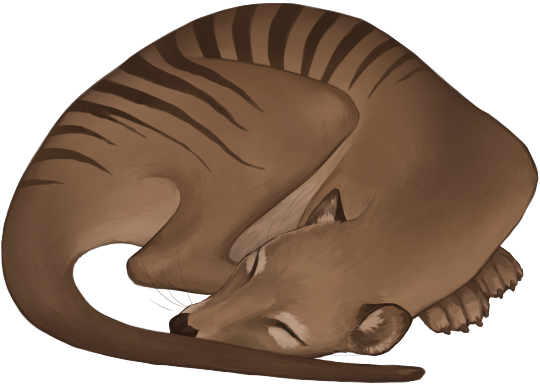

i’ve been on a thylacine kick lately prints etc available on me redbubble
#thylacine#tasmanian tiger#artists on tumblr#scientific illustration#paleoart#ISH#chicken scribbles#every so often im reminded about them and i revert to the 7yo who spent HOURS on documents compiling their habitat behaviour physiology#totally legit sightings etc etc complete with referencing#those were the days
229 notes
·
View notes
Text
Okay yeah I said I wasn't gonna give anyone my NSFW twitter and you'd have to look for it but actually I realised it doesn't really matter so
If you want my NSFW twitter, you can DM me or send an ask
#thylacines can talk#I FEEL SO AWKWARD POSTING THIS. ACK#my only rule is have a damn age in your bio. just some sort of indicator youre an adult#and im not going to scramble for it through your carrd or anything so if you ask on tumblr youre gonna get ignored or if you follow on#twitter youre gonna get blocked on sight 👍 jsyk
6 notes
·
View notes
Text
On this day in 1936, the last known thylacine (Thylacinus cynocephalus) died at the Hobart Zoo in Tasmania. The animal’s passing marked the extinction of its species. Also known as the “Tasmanian wolf,” the thylacine was Australia’s largest marsupial predator. It sported a dog-like form, with distinctive stripes, and a jaw that could open up to 80 degrees—one of the largest gapes of any mammal.
The thylacine fed primarily on small mammals and birds. Nocturnal and shy, it was seldom seen by humans. However, beginning in the 19th century, settlers believed the animals threatened their livestock and, spurred on by a bounty offered by the government, hunted them relentlessly. Attempts at protecting the species in the wild came too late: Despite numerous unconfirmed reports of sightings in recent decades, no definitive sightings have occurred since the 1930s.
#science#museum#nature#natural history#animals#fact of the day#did you know#thylacine#extinction#animal facts#cool animals#australia#tasmania#museum collections#conservation#on this day#amnh#on this date
3K notes
·
View notes
Text

Cryptid of the Day: Dobsengna
Description: In 1986, a large, striped, dog-like animal was seen on Mount Giluwe, in Papua New Guinea, referred to as the Dobsegna. Many hope these are living Thylacines, hiding in the island jungles, while others think sightings are misidentified Singing Dogs.
73 notes
·
View notes
Text

Tasmania , just a blink of an eye ago
September 7th, 1936. The last captive thylacine, a male nicknamed "Benjamin", died from unknown reasons at the Hobart´s Beaumaris Zoo.
Two months later, thylacines became a legally protected species.
In 1982, park ranger Hans Naarding was surveying in north-west Tasmania when he stood for several minutes with his torchlight fixed on a thylacine. It is the last credible sighting of the animal in the wild.
That same year, the IUCN declared the Thylacine, commonly known as the "Tasmanian tiger", officially extinct.
Photos, videos and sightings have been regular since then, none really worthy of consideration as late evidence of the species' late survival.
Companies of questionable morality have promised to bring the species back from extinction through cloning and genetic engineering.
But the thylacine is gone forever. That's the hard truth.
We can try to convince ourselves that somewhere, hidden and far away from humans, they are still alive. We can try to convince ourselves that our advanced technology will reverse the mistakes of the past and change the natural order.
But the thylacine is gone, and that will not change.
This sad story leaves us with an important lesson: We must put all our efforts and resources into conserving the species that remain in our world.
May the Thylacine always remain an eternal reminder of what extinction means.
#zoology#animals#art#nature#wildlife#paleoart#endangered species#tasmania#australia#thylacine#tasmanian tiger#mammal#tasmanian devil#animal art#animal behavior#extinction
306 notes
·
View notes
Text
Animal of the Day for November 24: Thylacine (Species Thylacinus cynocephalus)

More commonly known as the Tasmanian Tiger, Thylacines were the apex predators of Tasmania, with close relatives in the Thylacinus genus also having formerly inhabited Australia. Despite their dog-like appearance, Thylacines are actually marsupials, their appearance and behavior is due to convergent evolution.
Unfortunately the Thylacine was hunted to extinction, with the last known individual dying in 1936. However there have been alleged sightings of living Thylacines, and scientists are making efforts to de-extinct Thylacines.
#animal of the day#november 24#november#thylacine#tasmania#australia#mammals#marsupials#extinct animals
28 notes
·
View notes
Text
Tasmanian tiger comeback??
From the article:
“It was literally a head in a bucket of ethanol in the back of a cupboard that had just been dumped there with all the skin removed, and been sitting there for about 110 years,” Prof Andrew Pask, the head of the thylacine integrated genetic restoration research (with the acronym Tigrr) lab at the University of Melbourne, says.
[...]
A year on, he says it has advanced the work of the team of Australian and US scientists who are trying to resurrect the species more than expected at this stage. “We are further along than I thought we would be, and we have completed a lot of things that we thought would be very challenging and others said would be impossible,” he says.
The plan to ‘de-extinct’ the thylacine The project to bring back the thylacine is being driven by Colossal, a Texas-based biotechnology “ de-extinction and species preservation” company that is also aiming to recreate the woolly mammoth and the dodo using genetic engineering techniques.
[...]
The thylacine was Australia’s only marsupial apex predator. It once lived across the continent, but was restricted to Tasmania about 3,000 years ago. Dog-like in appearance and with stripes across its back, it was extensively hunted after European colonisation. The last known survivor died in captivity in 1936 and it was officially declared extinct in the 1980s.
Colossal says researchers have made several breakthroughs in its work on the species, putting the company much closer to its goal of returning it to the wild. They include what they say is the highest quality ancient genome ever produced, with just 45 gaps in a genetic blueprint that contains about 3bn pieces of information.
Lamm says it is an “incredible scientific leap” putting the program “on track to de-extinct the thylacine”, while other recent breakthroughs will be useful in protecting critically endangered species. “We are pushing as fast as possible to create the science necessary to make extinction a thing of the past,” he says.
23 notes
·
View notes
Text
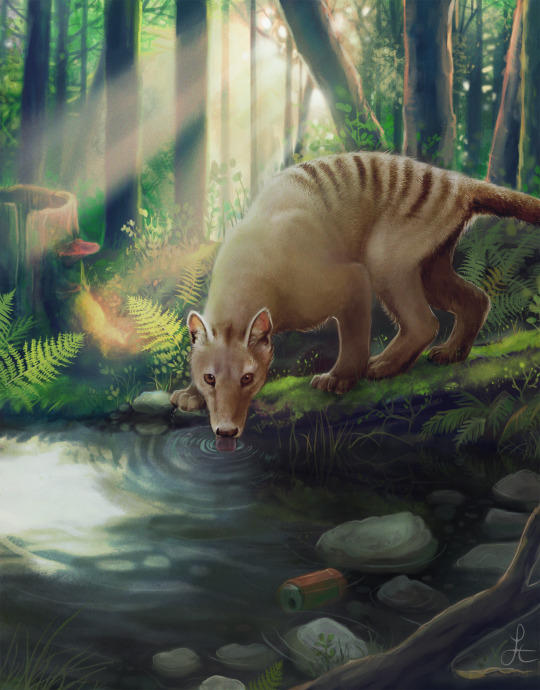
The Thylacine, or Tasmanian Tiger.
Extinct, or are the recent sightings true?
#tasmanian tiger#Tasmanian#Tiger#Thylacine#marsupial#extinct#cryptid#wild#forest#nature#cryptozoology
284 notes
·
View notes
Text

1. driftwood | bonfire | pyromania
2. sweater weather | a dark and stormy night| 10 days of rain
3. centaur | Sleepy Hollow, NY | bakotsu
4. Halloween virgin | Halloween veteran | Queen of Halloween
5. hidden lagoon | The Pettenedda (well monster) | a bunyip in the billabong
6. dungeon | hidden away in Hydra’s sub-basement | subterranean terror
7. supernatural harbinger (Vardøger) | bilocation (doppelgänger) | the Gothic double (Jekyll v. Hyde/Banner v. Hulk)
8. the Hanging Wood | Witches Castle | the Black Forest
9. Chinese Lantern | vampire fruit | Ghost Gum
10. sheet ghost | haunt | ghost POV
11. phobia | fear made flesh | [insert your personal fear here]
12. alienation | Hill of Crosses | “Waltzing Matilda”
13. mutation | sentient Hydra experiment | interviewing a monster
14. Sasquatch | Wild Man of the Woods | Silvanus (similar to a satyr or faun)
15. tarot cards | crystal ball | ouija board
16. a sling ring | a mystery portal | Doors of Death
17. immortal enemy(ies) to lover(s) | succubus soulmate | fiends for life
18. feline | witch’s familiar | thylacine sighting
19. dragon | La Gargouille | kaiju battle
20. enthrall | ‘like a moth to a flame’ | Mothman
21. a virgin sacrifice | fresh flesh | Drop Bear
22. cider festival | beer garden | Oktoberfest
23. rum runner | mooncusser | Half Moon Bay
24. Jersey Devil | Monster of Ravenna | La Llorona
25. costume | disguised naiad | swan maidens
26. (pre)deceased | axe murder | Fall River, Mass.
27. howl | werewolf | Forest of the Wolves
28. runic carvings | curse | a cult of witches
29. Blood Moon | The Hunt | the Wild Hunt/Santa Compaña
30. catacombs | reliquary | ossuary church
31. rich people Halloween party | a Gothic masquerade | Hydra’s Halloween Ball
Alternates
Because the Darcy Lewis Bingo Mod Team are writers and artists ourselves, we understand that not all prompts are created equal and, therefore, are not necessarily inspiring to all creators. So, for 2024-25, we are including a list of 10 fun, spooky alternate prompts you’re welcome to use on any day you get stumped by the creator prompts we’ve supplied above. Each alternate prompt may only be used once, however, so use them wisely and don’t take them for granted. These are not easier prompts by any means! And don’t forget that all of your Promptober fills must incorporate our beloved Lady of the Astrophysics Lab, Dr. Darcy Lewis!
A1. a 2-sentence horror story (req.: cannot be longer than 2 sentences & must tell a complete horror story)
A2. Darcy’s First Halloween
A3. a Halloween Darcy drabble (req.: exactly 100 words)
A4. the Avengers go out on Halloween Night in New York City
A5. an onomatopoeic story or poem (req.: must include at least 13 onomatopoetic words)
A6. a Darcy retelling of the Headless Horseman (or your favorite classic spooky story)
A7. an acrostic poem about Darcy, the Avengers, and Halloween
A8. The Mummy AU
A9. an autumnal Darcy haiku
A10. record a podfic (with permission) of a friend’s spookiest Darcy fic
With our alternates, this means every player begins this round of Promptober with a whopping 103 spooky season prompts. We can’t wait to see what you make of them in the year to come. Have a spooky time creating, Darcy Friends!
Promptober 2024 is a list of 31 this-that-or-the-other prompt themes handpicked by our mod team to cross international borders for creators to choose from to create spooky, oogie, or hygge fanworks for the autumn & Halloween season (or for Scary Christmas, Valloween/St. Guillotine’s Day, Half-Halloween, Gay Halloween!, Summerween, Scary Christmas in July, or Autumn Down Under for our Aussie creators). We continue to be not your mom so we’re not here to tell you when or how long you can celebrate your Spooky Season. Here at Darcy Lewis Bingo HQ, all your spooky holiday lifestyle choices are valid. In fact…
Important Dates & Deadlines
Promptober begins on August 3rd, 2024 this round, but you know how we feel about deadlines. 🔪 So, for this round of Promptober, we’re doing away entirely with hard deadlines and we mean it! You have from August 3rd, 2024 until our next Halloween event begins, and even beyond that, if you like! Though we do strongly recommend wrapping up this challenge before the next spooky challenge begins, this event remains open basically as long as this bingo exists. No pressure to complete, ever, just inspo and encouragement. 🧡
Promptober Challenges
Promptober Mini Challenge: choose and complete fannish works for any 13 of the prompts from this list for our mini challenge. Creators may choose 13 prompts from the list of prompts—any 13 prompts at all!
Promptober Mega Challenge: choose and complete fannish works for 31 of the listed prompts for our spooky main event! Creators may choose any 31 of the total 93 prompts listed to complete this event.
For an extra personal challenge, you may limit yourself to only posting a fanwork inspired by one of the prompts listed by the number that corresponds to each day of October for every day of the month all month long, but it’s absolutely not required for completion of this event. We want you to succeed and create, and to share new Darcy works, so our goal is always to support you in your fannish creative endeavors and make that as easy as possible.
*If you post every day in October as a personal challenge, mention us @darcylewisbingohq in your tumblr posts to let us know you’ve posted a new work or update so we can reblog your daily posts in as close to real time as possible. Once we’ve left a like on your post, rest assured: that means it’s in our queue, just waiting its turn to be featured on our blog.
Promptober 2024 Guidelines
Promptober fills must prominently feature our beloved Lady of Astrophysics, Dr. Darcy Lewis!
Promptober creators have all of our 2024-2025 round to work on this event! If you want to work on it the whole year until we release the next spooky season event, we encourage you to do that. If spooky challenges are particularly your jam, we’d love to see what you do with ours when you’ve got the whole year to tackle it!
entries—Your fanwork is NOT required to use the prompt exactly as it appears on this list. Prompts need only inspire your fanwork, whether they appear word for word in it or not. However the prompt inspires you is correct, as far as we’re concerned. Subvert the prompt, reverse the prompt, marry the prompt—it’s up to you.
All forms of fannish works are accepted and encouraged for this event! Fanfic, fanart, poetry, podfics, fanvids, playlists, fiber and other crafts, fan edits, moodboards, etc.
You may start posting your Promptober fanworks as soon as they’re ready to share. No need to wait until October and no need to rush to get them all done in that month, either.
Fanwork Fill Requirements
100 words for written works or word art, with the exception of poetry with independent formatting rules (such as haikus).
1 image for artwork or handcrafts of any kind and a description for the visually impaired of the medium used and what it represents.
1 image for cosplay or character-bounding and a description for the visually impaired of cosplay or clothing and any other fashion influences incorporated into the costume or clothing (be descriptive! talk about fabrics and colors, tone and texture! describe the emotions the colors you used evoke in you as the creator!)
9 elements for moodboards (background, images, texts, ephemera) and a description for the visually impaired of the moodboard and what it represents.
6 images for social media AUs and a description for the visually impaired of the creation and what it represents.
10 songs for playlists and a text list of artists and songs to give credit to the original artists, plus a description for the visually impaired of what the playlist represents and how it relates to Darcy.
Still not sure if your creation will meet the minimum prompt fill requirements? @ a mod! we’ll create new requirements based on new types of creator fanwork submissions, as needed.
These participation requirements are identical to our annual bingo event; those guidelines are always pinned at the top of our tumblr blog where they’re easy to find; the link to those guidelines and fill requirements can also be found on Discord in our #bingo-info channel.
24 notes
·
View notes
Note
hey! I was wondering if you ever watch clints reptiles - he just posted a video about marcupeal phylogeny and specifically mentioned thylacines, and talked about how theres been sightings in new guinea? i was just wondering about your opinion, since you just posted a new thylacine drawing and i know youre very interested in them :D
idk, the fact i haven't heard all that much buzz about this theory from the zoologists i follow on twitter makes me doubtful by default.
i'll be honest i'm pretty skeptical of this new guinea claim because of dingoes and new guinea singing dogs.
the popularly accepted theory for the mainland extinction of the thylacine and likely tasmanian devil was competing pressure from dingoes.
clint mentions all of this, but he leaves out the fact that dingoes arrived on the australian continent from the north and studies indicate that dingoes may be descendants of more basal new guinea singing dogs. that would likely mean imo that the new guinea thylacine population, if anything, would be the first to suffer the consequences of canine encroachment.
only on the island of tasmania where absolutely no dingoes were ever present sheltered a 100% verifiable thylacine population by the time of european colonization. to my knowledge, the most recent solid physical evidence of thylacines in new guinea is still several thousand years old. so to me it seems that dingo/wild dog distribution and thylacine distribution mixed as well as oil and water. If there's thylacines in new guinea, it would have to be some enclave free of dogs.
i know the topography of new guinea can give refuge to very cryptic animals, and as clint said the relatively low human population and no european persecution is a plus. i won't disocount local indigenous anecdotes because they've been proven right with other species once thought extinct, but like where are skins or bones or footprints?
also i feel like clint really really oversimplified the cloning process thylacines would require. he makes it seem like it would be simple because we have their whole genome sequenced and have specimens under 100 years old to work with. the thing is, cloning a mammoth is simpler than cloning a thylacine even though they went extinct millenia ago, because mammoths still have a close living relative.
a cursory look at google tells me wooly mammoths and extant asian elephants last shared an ancestor as recently as 6 million years ago, they both belong to the family elephantidae. thylacines however were the last living member of their own family, thylacinidae, which diverged somewhere around 25mya from the other dasyuromorphs. scientists don't really have a close living relative to work with. clint says the complete genome means we wouldn't have to "stick frog DNA in there" to complete it, but the thing is with cloning you have to start with a frog/living DNA sample to tweak it into a thylacine!! until we can 3D print an organism out of thin air with proteins and acids, there has to be a template sample of living cells whose nuclei we can tamper with. and the less related they are, the more DNA has to be overhauled
if you wanna learn exactly how much of a logistical nightmare it's gonna be to clone a thylacine, this lecture explains it way better:
youtube
the takeaway analogy is that cloning a thylacine is the CRISPR equivalent of doing a puzzle of a clear blue sky, not having the box to look at for any reference, and about half the pieces are doubles of other pieces (because most DNA is junk code that does nothing). it's like next to impossible and i still have more faith in de-extinction than a rediscovery.
so yeah, i guess i'm a bit of a thylacine doomer. but i do want to believe, just temper your expectations. to me a win would be a single engineered thylacine cell by the centennial of their extinction lol.
73 notes
·
View notes
Text
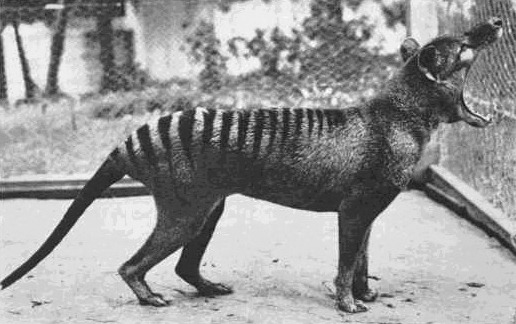
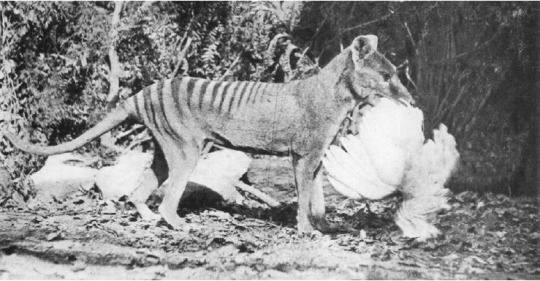
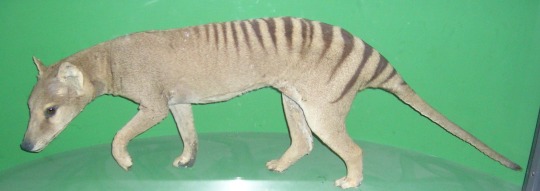


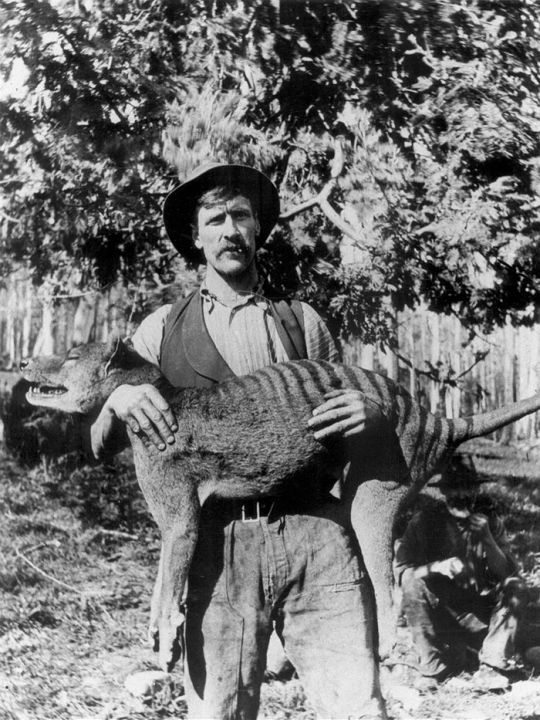

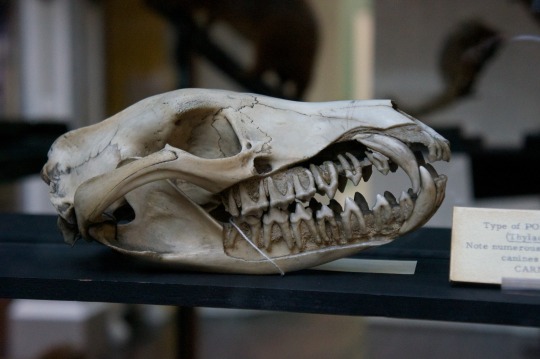

Thylacine
(temporal range: 2 mio. years ago until 7. September 1936)
[text from the Wikipedia article, see also link above]
The thylacine (/ˈθaɪləsiːn/; binomial name Thylacinus cynocephalus), also commonly known as the Tasmanian tiger or Tasmanian wolf, is an extinct carnivorous marsupial that was native to the Australian mainland and the islands of Tasmania and New Guinea. The thylacine neared extinction throughout most of its range in mainland Australia by about 2,000 years ago, most likely because of the introduction of dingoes or due to climate change. Prior to European settlement around 5,000 remained in the wild on Tasmania. Beginning in the nineteenth century they were perceived as a threat to the livestock of farmers and bounty hunting was introduced. The last known of its species died in 1936 at Hobart Zoo in Tasmania. The thylacine is widespread in popular culture and is a cultural icon in Australia.
The thylacine was known as the Tasmanian tiger because it displayed dark transverse stripes that radiated from the top of its back, and it was known as the Tasmanian wolf because it had the general appearance of a medium-to-large-size canid. The name thylacine is derived from thýlakos meaning "pouch" and ine meaning "pertaining to", and refers to the marsupial pouch. Both sexes had a pouch. The females used theirs for rearing young and the males used theirs as a protective sheath, covering the external reproductive organs. It also had a stiff tail and could open its jaws to an unusual extent. The thylacine was an apex predator, though exactly how large its prey had been is disputed. Its closest living relatives are the other members of Dasyuromorphia including the Tasmanian devil.
The thylacine had died out on New Guinea and very few were left on the Australian mainland before European settlement of the continent. Intensive hunting on Tasmania is generally blamed for its extinction, but other contributing factors were disease, the introduction of and competition with dingoes, human encroachment into its habitat and climate change. The remains of the last known thylacine were discovered at the Tasmanian Museum and Art Gallery in 2022. Since extinction there have been numerous searches and reported sightings of live animals, none of which have been confirmed.
The thylacine has been used extensively as a symbol of Tasmania. The animal is featured on the official coat of arms of Tasmania. On 7 September, the date in 1936 on which the last known thylacine died, National Threatened Species Day is commemorated in Australia. Universities, museums and other institutions across the world research the animal. Its whole genome sequence has been mapped and there are efforts to clone and bring them back to life.
108 notes
·
View notes
Text
Patreon request for @/brittoniawhite (Instagram handle) - Thylacinus cynocephalus. I’ve drawn this guy already, but here’s a new pose AND a size chart, which the previous post didn’t have.

Known by several common names: the Tasmanian Tiger, Tasmanian Wolf, or simply the Thylacine, Thylacinus cynocephalus was neither canine nor feline, but instead a large carnivorous marsupial.
Being a marsupial, it had a pouch. Though it was unique in that both females and males had pouches: the males’ were used to protect their reproductive organs. Thylacine life expectancy was estimated to be between 5 and 7 years, though some captive specimens lived to 9 years. They were shy and nocturnal carnivores, likely eating other marsupials such as kangaroos, wallabies, wombats, and possums, as well as other small animals and birds, such as the similarly extinct Tasmanian Emu. However, it is a matter of dispute whether the thylacine would have been able to take on prey items as large or larger than itself. It is unknown whether they hunted alone or in small family groups, though captive thylacines did get along with each other.

Thylacinus cynocephalus was the last of the Thylacinids, a family of Dasyuromorph marsupials. It lived from the Pleistocene to the Holocene in Australia and New Guinea, driven to extinction in the 1930s by hunting, human encroachment, disease, and feral dogs. The thylacine was already extinct on the Australian mainland and New Guinea by the time British settlers arrived, with the island of Tasmania being its last stronghold. Settlers feared the marsupial would attack them and their livestock, demonizing it as a “blood drinker”, and bounties were put in place that drove the thylacine to be overhunted. As they became rarer, there was a push to capture thylacines and keep them alive in captivity, but unfortunately it was too little, too late. Conservation and animal welfare was not at the level it is today, not much was known about their behavior in the wild, and there was only one successful birth in captivity. Studies show that with continued successful breeding, a campaign to change public perception, and protections put into place much earlier, the thylacine could have been saved. But the last captive thylacine died in 1936, and official protection was not put in place until that year, 59 days before his death. Sightings continued into the 1980s, and even today some claim to see them, but all of these sightings are unconfirmed and unlikely. As are all the other animals on this account, the thylacine is definitively extinct.

Today, carnivores such as wolves and coyotes are demonized in the same way the thylacine was, and there are some who wish to also wipe them out entirely, even having succeeded in many places. While some of the thylacine’s closest relatives, like the Numbat and Tasmanian Devil, survived the European persecution which killed off the thylacines, they are still endangered today due to introduced predators and disease. Instead of continuing to search for, or trying to resurrect the lost thylacine, perhaps it is best we channel that attention, love, and regret on the species we still have. Extinction is forever, and it is easier to save those who are still alive.
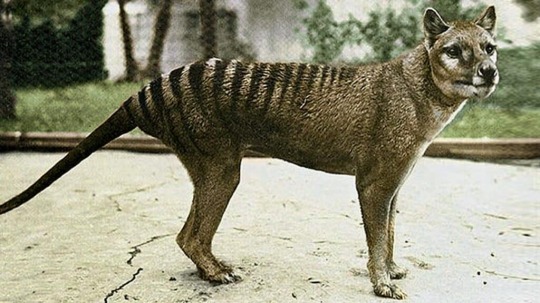
This art may be used for educational purposes, with credit, but please contact me first for permission before using my art. I would like to know where and how it is being used. If you don’t have something to add that was not already addressed in this caption, please do not repost this art. Thank you!
#Thylacinus cynocephalus#thylacinus#thylacine#tasmanian tiger#tasmanian wolf#marsupials#mammals#synapsids#Australia#Tasmania#Pleistocene#Holocene
16 notes
·
View notes
Text
Round Three: Cryptogyps vs Heracles
Cryptogyps lacertosus

Artwork by @otussketching, written by @zygodactylus
Name Meaning: Powerful Hidden Vulture
Time: 770,000 to 55,000 years ago (Chibanian to Tarantian stage of the Pleistocene epoch, Quaternary period)
Location: Throughout Australia, including Kalamurina, the Wellington Caves, and the Nullarbor Plain
Today, there are no vultures in Australia. In fact, until recently, it seemed fairly clear that no vultures had lived in Australia - but now, we know they did! Originally thought to be an eagle, Cryptogyps was on the small size for a vulture, only bigger than the living Hooded Vulture - though it was about the size of the wedge-tailed eagle. However, it was proportioned similarly to other vultures, and between that and its great range across the entirety of Australia, it is logical to conclude that it lived similarly to other vultures, feeding primarily on carrion and going great distances to find it. It did not have the right musculature to be an active hunter like eagles and hawks. As such, Cryptogyps was a vital part of its environment, reducing the spread of disease and recycling nutrients and energy back into the food web like vultures today. Cryptogyps lived alongside a wide variety of weird megafuana present in Australia during the last ice age, including marsupial lions, giant demon-ducks (mihirungs), giant hippo-sized wombats, sheep-sized and fossorial echidnas, short-faced kangaroos, giant koalas, thylacines, giant maleefowls, huge monitor lizards, large crocodilians, and giant pythons - as well as cassowaries, regular kangaroos, emus, and other large animals that remain today. It was a weird place of which Cryptogyps was a small and important part, and would have been a regular sight in the skies to the first Indigenous Australians to settle on the continent!
Heracles inexpectatus
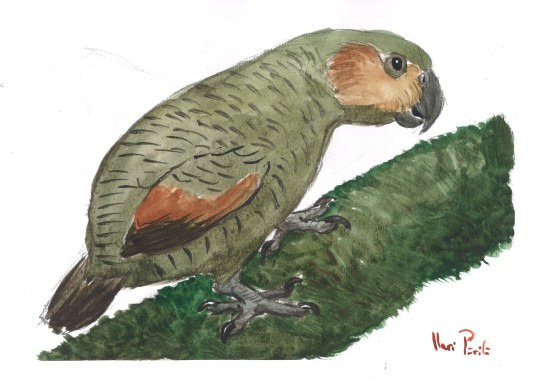
Artwork by @otussketching, written by @zygodactylus
Name Meaning: Unexpected Herculean Parrot
Time: 16 to 19 million years ago (Burdigalian stage of the Miocene epoch, Neogene period)
Location: St. Bathans Fauna, Bannockburn Formation, Aotearoa
Heracles was a truly alarmingly large parrot, related to modern day Kea, Kaka, and Kakapo, known from the fantastic avifauna of St Bathans. Standing more than two feet tall and weighing about fifteen pounds, this animal was much larger than any expected from the St Bathans fauna, which represented the initial colonization of Aotearoa (Zealandia) after it returned above sea level. Heracles is also the largest known species of parrot, ever. It was presumably flightless, though it is uncertain if it was nocturnal like its living relative the Kakapo. Its exact ecology is still uncertain, given the material known from Heracles is limited and its living relatives have very disparate ecologies, though it is possible it was omnivorous similar to the Kea and Kaka today. The St Bathans fauna lived in a freshwater lake system, in a subtropical emergent rainforest. Separated from land bridges, the fauna was dominated by birds, with early relatives of the Kiwi, New Zealand Wrens, Adzebills, and Wedge-Tailed eagles found in the fauna, as well as somewhat modern looking Moas. Smaller flamingos, large fruit pigeons, and a huge variety of geese and other waterfowl are known. In addition, frogs, tuataras, other lizards, crocodilians, turtles, and many different types of fish are known from this fascinating ecosystem.
#dmm#dmm rising stars#dinosaur march madness#dinosaurs#birds#paleontology#birblr#palaeoblr#march madness#bracket#polls#round three#cryptogyps#heracles
175 notes
·
View notes
Text
Enough with these “immersive art” and “immersive cartoon” experiences. I want an immersive extinct animal experience. I want to see life-sized thylacines, and dodos running on a beach. I want to sit on the floor of a warehouse while the sights and sounds of a full flock of passenger pigeons is projected all around me.
106 notes
·
View notes